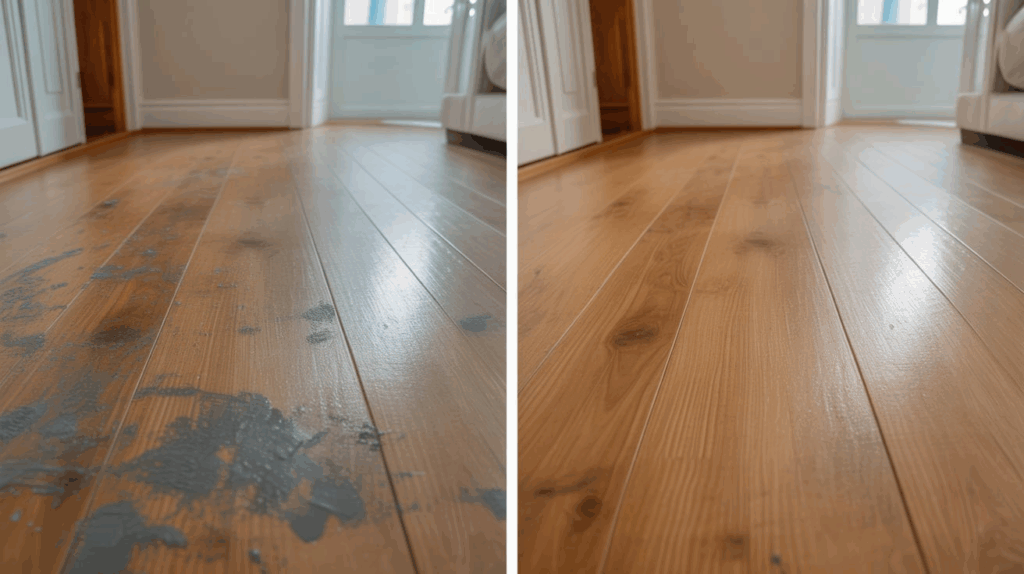Paint spills on hardwood floors are more common than you might think. A few drops fell while painting a wall, or a little splatter happened during a DIY project.
No matter how it got there, seeing paint on your beautiful hardwood can be stressful. You want it gone, but you also don’t want to damage the wood trying to clean it up.
Hardwood floors are easy to damage. Scrubbing too hard, using harsh chemicals, or applying too much moisture can ruin the finish or leave permanent marks.
That’s why it’s important to remove the paint carefully and use methods that are safe for wood.
The good news? You don’t need fancy tools or strong chemicals to fix it.
In this post, you’ll learn simple, natural, and chemical-free ways to remove paint from hardwood floors, whether the paint is still wet or already dried.
Let’s keep your floors looking great with the right approach.
Paint Type for Cleaning Hardwood Floors
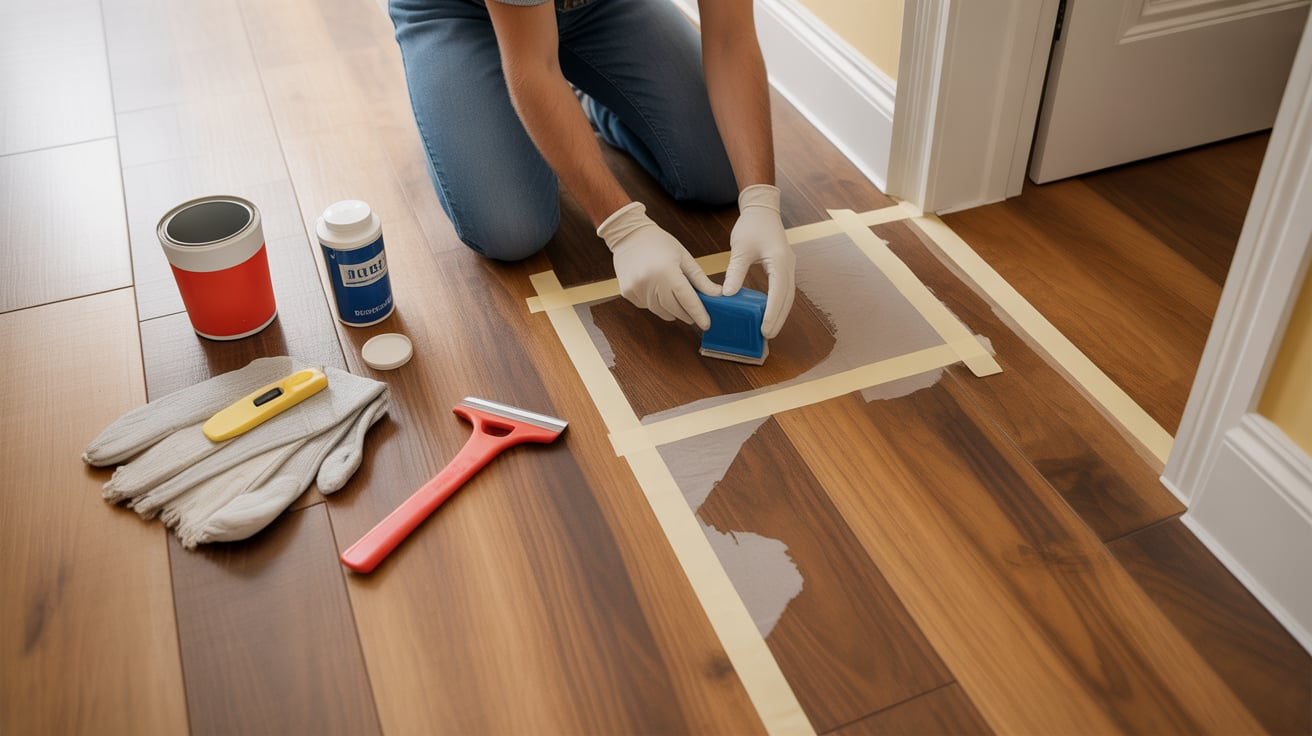
Before you try to remove any paint from your hardwood floor, you need to know what kind of paint you’re dealing with. Is it water-based or oil-based? This makes a big difference in how you clean it up.
Water-based paint (like latex or acrylic) is easier to remove. It softens with water and comes off without too much effort.
Oil-based paint, on the other hand, is tougher. It sticks more and needs something stronger to break it down, like alcohol or a bit of acetone.
How to Tell the Difference
- Dab a bit of rubbing alcohol on a cotton ball.
- Rub it gently on the paint spot.
- If the paint comes off, it’s water-based.
- If it stays put, it’s oil-based.
Knowing this helps you pick the safest and most effective method without harming your hardwood.
How to Prepare Hardwood Floors when Removing Paint
Before you start scrubbing or scraping, it’s important to prepare the space. Rushing into paint removal without the right setup can lead to scratches, dull spots, or even more mess.
Taking just a few minutes to gather your tools, clear the area, and protect the surrounding floor can make the whole process smoother and safer for your hardwood.
Before you use any cleaner, always do a quick test in a hidden area of the floor, like behind a door or under furniture.
This helps you make sure the product won’t discolor the wood or damage the finish.
Better safe than sorry when working with hardwood!
Tools and Materials You’ll Need
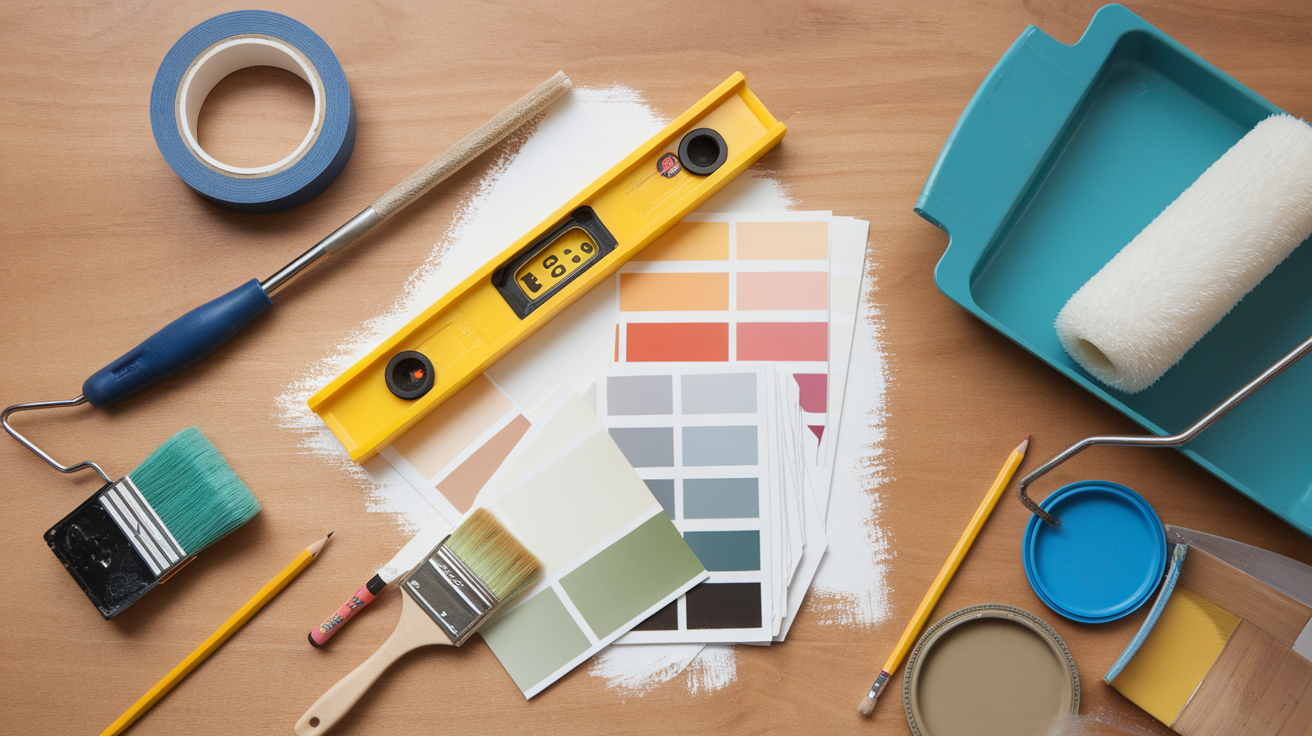
- Plastic scraper or an old credit card (gentle on wood, avoid anything metal)
- Soft cloths or paper towels
- Mild dish soap mixed with warm water for basic cleaning
- Rubbing alcohol or white vinegar for breaking down paint
- Cotton balls or swabs for spot treatments
- Sponge and bucket for rinsing and wiping surfaces
- Painter’s tape (optional) to protect nearby clean areas
- Rubber gloves, as you’ll be using stronger products, or want to protect your hands
Tip: Having everything ready up front keeps the process quick and helps you avoid unnecessary damage to your floor.
Methods for Removing Paint Safely
Once you’ve identified the type of paint and prepped your work area, it’s time to remove the paint without damaging your hardwood floors.
1. Scrape Gently with a Plastic Putty Knife
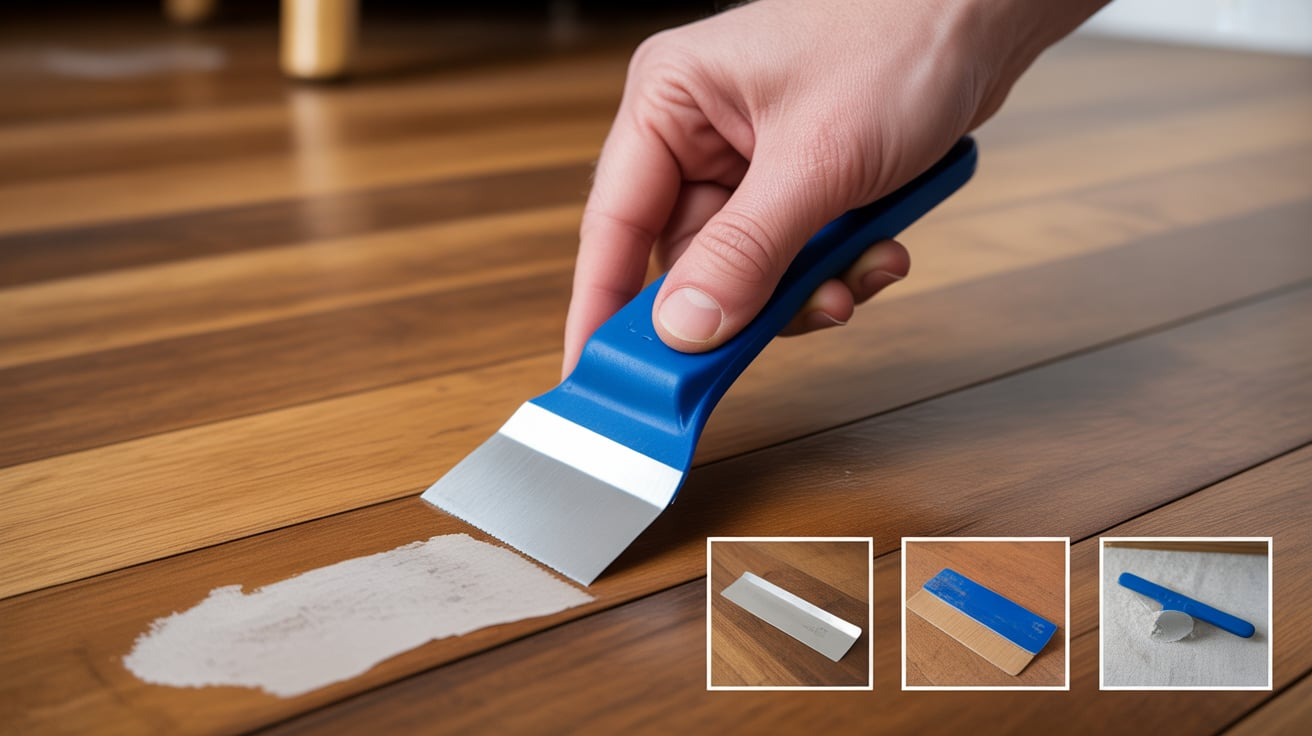
Best for: Small, dried water-based paint spots. If the paint has dried into thin flakes or drops, try gently lifting it with a plastic putty knife or an old credit card.
Steps:
- Hold the scraper at a shallow angle.
- Lightly press under the edge of the dried paint.
- Wiggle gently to lift it without gouging the wood.
- Wipe the area with a damp cloth afterward.
Tip: Don’t force it. If the paint resists, move on to the next method instead of scraping harder.
2. Use Soapy Water for Fresh Water-Based Paint

Best for: Wet or recently dried latex or acrylic paint. Warm, soapy water is a gentle and effective option for fresh spills.
Steps:
- Mix a few drops of dish soap with warm water.
- Dip a cloth or sponge into the mixture and wring it out well.
- Blot and gently rub the paint spot.
- Rinse the cloth and wipe again to remove any residue.
- Dry the area completely with a towel.
Tip: Avoid soaking the floor. Excess water can seep into the seams and cause warping over time.
3. Rubbing Alcohol or Vinegar for Stubborn Spots
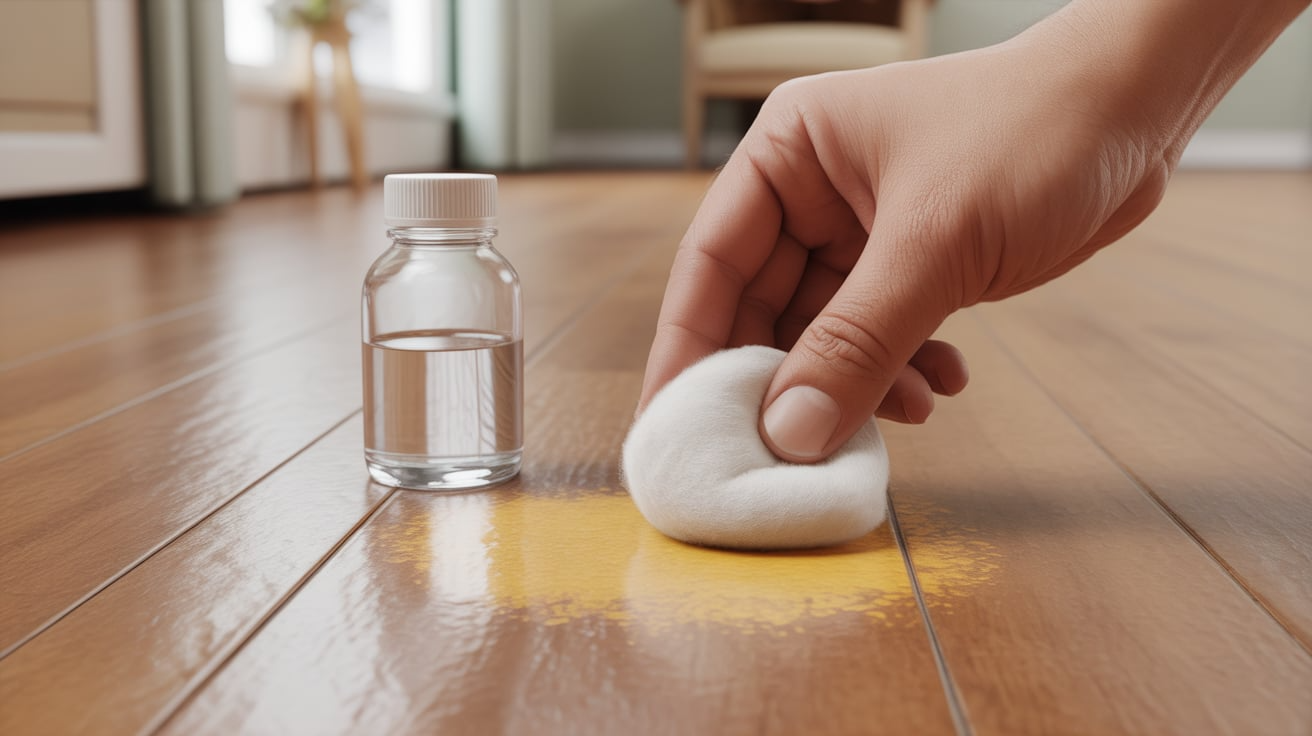
Best for: Dried water-based paint or light splatters. Both rubbing alcohol and white vinegar are mild but effective for loosening paint without harming sealed wood.
Steps:
- Dampen a cotton ball or cloth with rubbing alcohol or vinegar.
- Press it onto the paint spot for 30–60 seconds.
- Gently rub the paint with the cloth until it begins to lift.
- Wipe clean with a damp cloth and dry right away.
Tip: Don’t let the liquid sit too long—just enough to soften the paint without risking the finish.
4. Denatured Alcohol or Acetone for Oil-Based Paint
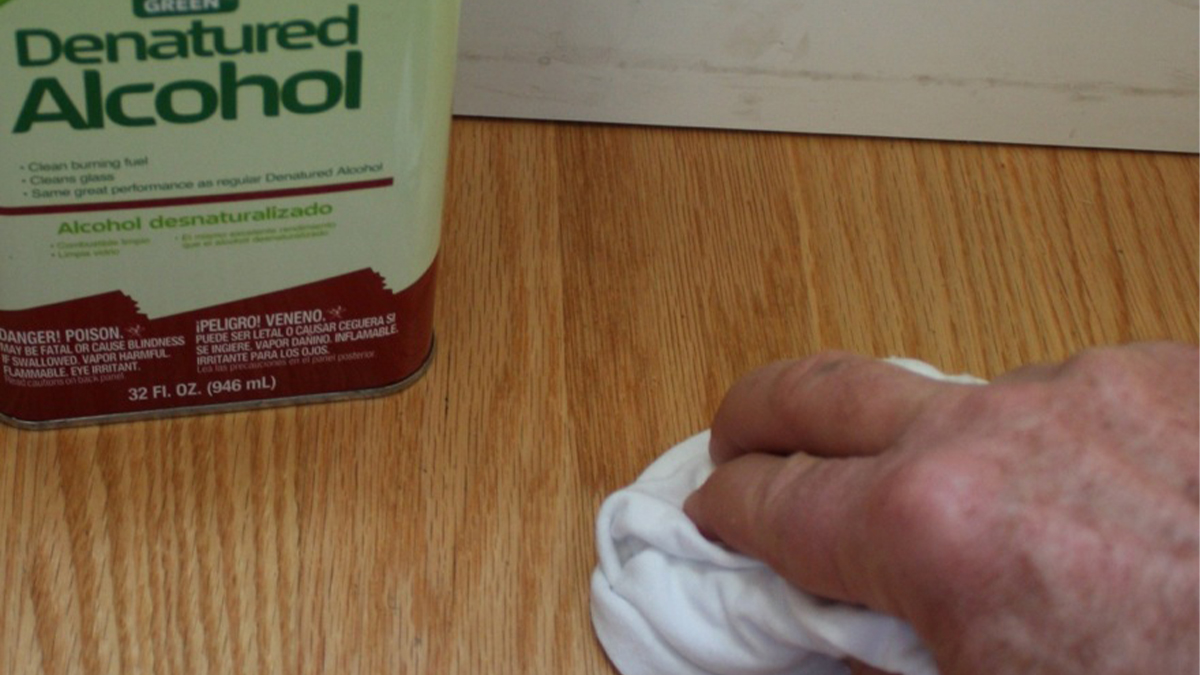
Best for: Tough, dried oil-based paint. These stronger solvents should be used with care, but can work well for stubborn paint.
Steps:
- Apply a small amount of denatured alcohol or acetone to a clean, soft cloth.
- Dab the paint lightly, don’t scrub or flood the area.
- Wait 10–15 seconds, then gently rub the spot in small circles.
- Wipe away any loosened paint and clean the area with a damp cloth.
- Dry immediately.
Caution: Always test in a hidden area first. These products can strip the floor’s finish if left on too long or used too aggressively.
5. Commercial Paint Removers (Optional)
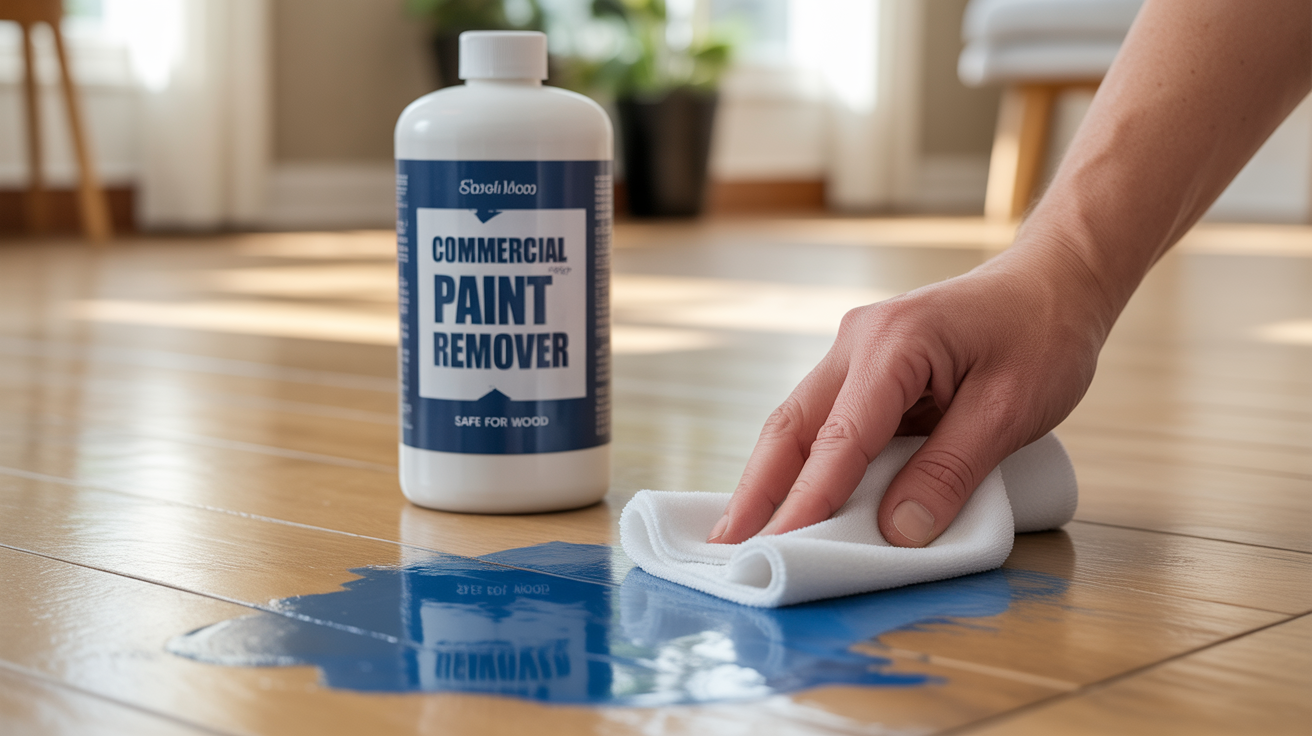
Best for: Large areas or stubborn oil-based stains. If the above methods don’t work, you can try a commercial paint remover, make sure it’s labeled safe for hardwood floors.
What to Look For:
- Solvent-free or low-odor formulas
- Clearly marked “safe for wood”
- Avoid anything with methylene chloride, which can damage floors and is unsafe to inhale
How to Use:
- Apply as directed using a soft cloth or sponge.
- Wipe gently and clean up any residue right away.
- Rinse and dry the area completely.
Removing Paint from Hardwood Floors: What to Avoid
When removing paint from hardwood floors, what you don’t do matters just as much as what you do.
Avoid Metal Tools or Harsh Scrubbing
It might be tempting to grab a razor blade or metal scraper to speed things up, but don’t. Metal tools can scratch the wood surface, dent the grain, or chip the finish.
Even a little pressure in the wrong spot can leave lasting marks.
Also, avoid using rough scouring pads or steel wool. These abrasive materials can strip away the protective coating and leave the floor looking worse than before.
Don’t Let Chemicals Sit Too Long
Even if you’re using something as mild as rubbing alcohol or vinegar, don’t leave any liquid sitting on your wood floor for more than a minute or two.
Harsh chemicals and even moisture can strip the varnish, dull the shine, or cause the wood to swell.
Always blot, not soak, and wipe dry right after treatment. A quick test spot in a hidden area helps you play it safe before treating the visible floor.
Aftercare Tips
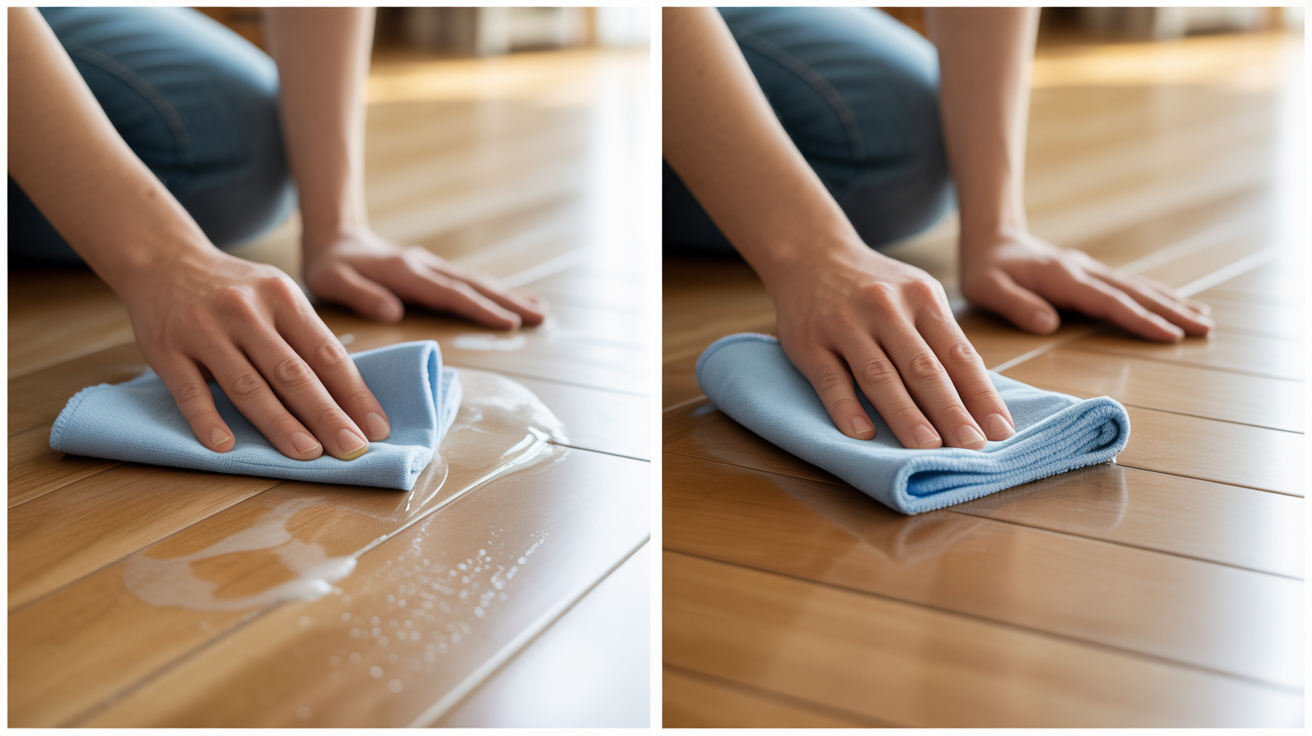
Once the paint is gone, your floor may still need a little extra care. These simple steps go a long way in keeping your hardwood floor in top shape.
Rinse and Buff the Area
After removing paint, there might be leftover residue from alcohol, vinegar, or commercial products. If left behind, these can dull the finish or leave streaks.
What to do:
- Lightly dampen a clean cloth with water or a wood-safe cleaner.
- Wipe down the treated area to remove any leftover product.
- Immediately dry the spot with a soft towel.
- For a nice finish, buff the area with a dry microfiber cloth to restore shine.
- Refinish if Needed
If paint removal left a dull patch or light discoloration, a quick touch-up can help.
Simple fixes include:
- Wood-colored touch-up pens to blend small scratches or faded spots.
- Floor wax or polish to restore shine and even out the finish.
- For deeper damage, you may need to sand and refinish a small section lightly, but this is rarely needed for minor paint spots.
Conclusion
Getting paint off hardwood floors doesn’t have to be hard.
The key is knowing whether you’re dealing with water-based or oil-based paint and choosing the right way to clean it up.
Simple tools like a plastic scraper, mild soap, vinegar, or rubbing alcohol can help a lot.
Warm, soapy water is usually enough to clean fresh spills. Rubbish or vinegar works well for dried spots.
Just remember, go slow and be gentle. Don’t use metal tools or soak the floor with water.
Once the paint is gone, check the area. If it looks dull, you can buff it with a dry cloth or use a wood polish to bring back the shine. A small fix now can help your floors look great later.

